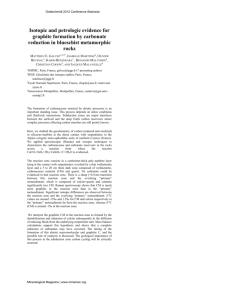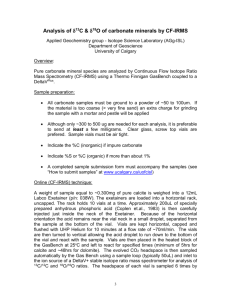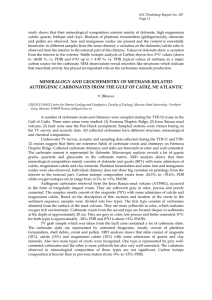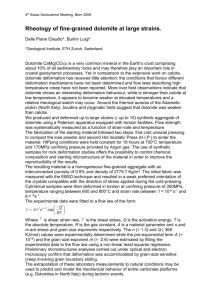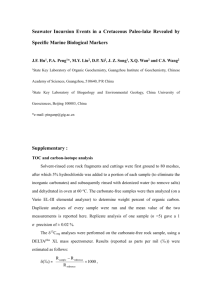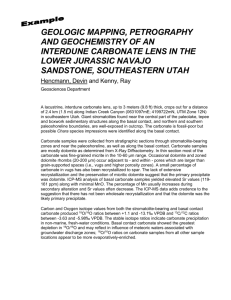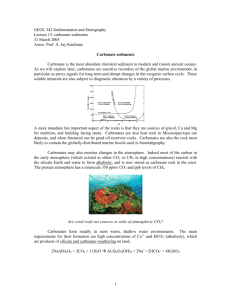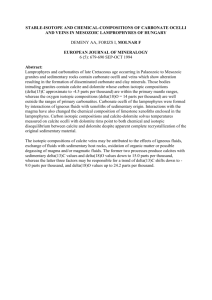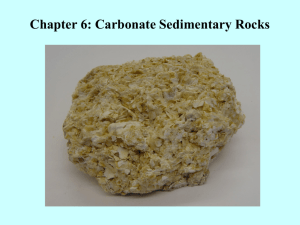Material properties and microstructure from
advertisement
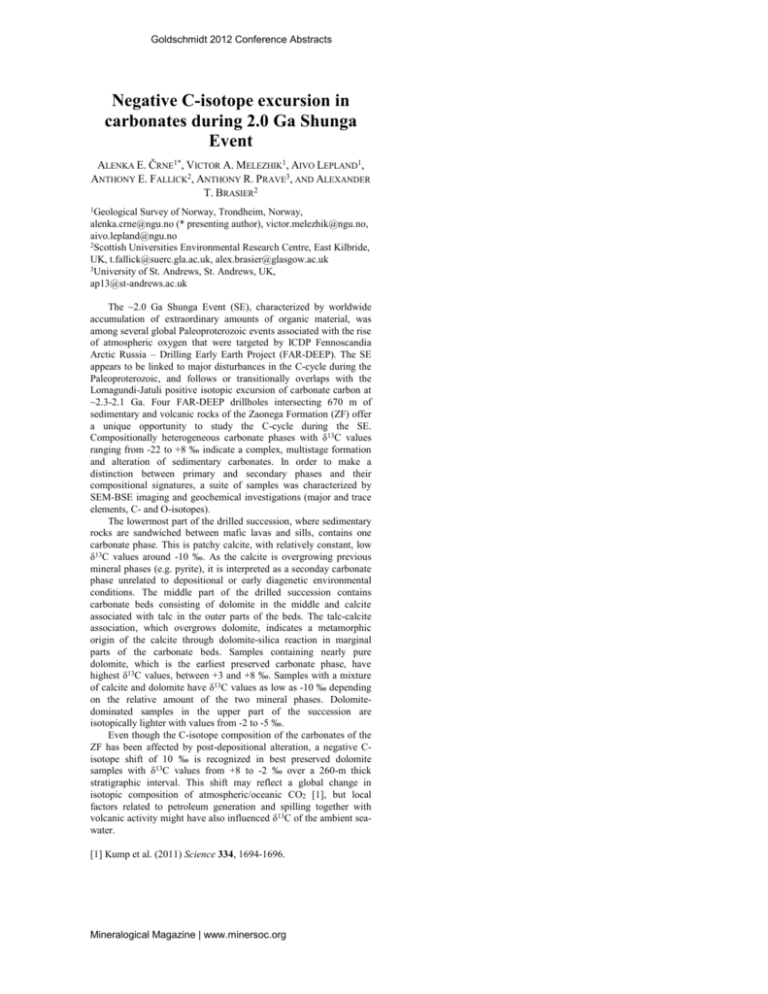
Goldschmidt 2012 Conference Abstracts Negative C-isotope excursion in carbonates during 2.0 Ga Shunga Event ALENKA E. ČRNE1*, VICTOR A. MELEZHIK1, AIVO LEPLAND1, ANTHONY E. FALLICK2, ANTHONY R. PRAVE3, AND ALEXANDER T. BRASIER2 1Geological Survey of Norway, Trondheim, Norway, alenka.crne@ngu.no (* presenting author), victor.melezhik@ngu.no, aivo.lepland@ngu.no 2Scottish Universities Environmental Research Centre, East Kilbride, UK, t.fallick@suerc.gla.ac.uk, alex.brasier@glasgow.ac.uk 3University of St. Andrews, St. Andrews, UK, ap13@st-andrews.ac.uk The ~2.0 Ga Shunga Event (SE), characterized by worldwide accumulation of extraordinary amounts of organic material, was among several global Paleoproterozoic events associated with the rise of atmospheric oxygen that were targeted by ICDP Fennoscandia Arctic Russia – Drilling Early Earth Project (FAR-DEEP). The SE appears to be linked to major disturbances in the C-cycle during the Paleoproterozoic, and follows or transitionally overlaps with the Lomagundi-Jatuli positive isotopic excursion of carbonate carbon at ~2.3-2.1 Ga. Four FAR-DEEP drillholes intersecting 670 m of sedimentary and volcanic rocks of the Zaonega Formation (ZF) offer a unique opportunity to study the C-cycle during the SE. Compositionally heterogeneous carbonate phases with δ13C values ranging from -22 to +8 ‰ indicate a complex, multistage formation and alteration of sedimentary carbonates. In order to make a distinction between primary and secondary phases and their compositional signatures, a suite of samples was characterized by SEM-BSE imaging and geochemical investigations (major and trace elements, C- and O-isotopes). The lowermost part of the drilled succession, where sedimentary rocks are sandwiched between mafic lavas and sills, contains one carbonate phase. This is patchy calcite, with relatively constant, low δ13C values around -10 ‰. As the calcite is overgrowing previous mineral phases (e.g. pyrite), it is interpreted as a seconday carbonate phase unrelated to depositional or early diagenetic environmental conditions. The middle part of the drilled succession contains carbonate beds consisting of dolomite in the middle and calcite associated with talc in the outer parts of the beds. The talc-calcite association, which overgrows dolomite, indicates a metamorphic origin of the calcite through dolomite-silica reaction in marginal parts of the carbonate beds. Samples containing nearly pure dolomite, which is the earliest preserved carbonate phase, have highest δ13C values, between +3 and +8 ‰. Samples with a mixture of calcite and dolomite have δ13C values as low as -10 ‰ depending on the relative amount of the two mineral phases. Dolomitedominated samples in the upper part of the succession are isotopically lighter with values from -2 to -5 ‰. Even though the C-isotope composition of the carbonates of the ZF has been affected by post-depositional alteration, a negative Cisotope shift of 10 ‰ is recognized in best preserved dolomite samples with δ13C values from +8 to -2 ‰ over a 260-m thick stratigraphic interval. This shift may reflect a global change in isotopic composition of atmospheric/oceanic CO2 [1], but local factors related to petroleum generation and spilling together with volcanic activity might have also influenced δ13C of the ambient seawater. [1] Kump et al. (2011) Science 334, 1694-1696. Mineralogical Magazine | www.minersoc.org
